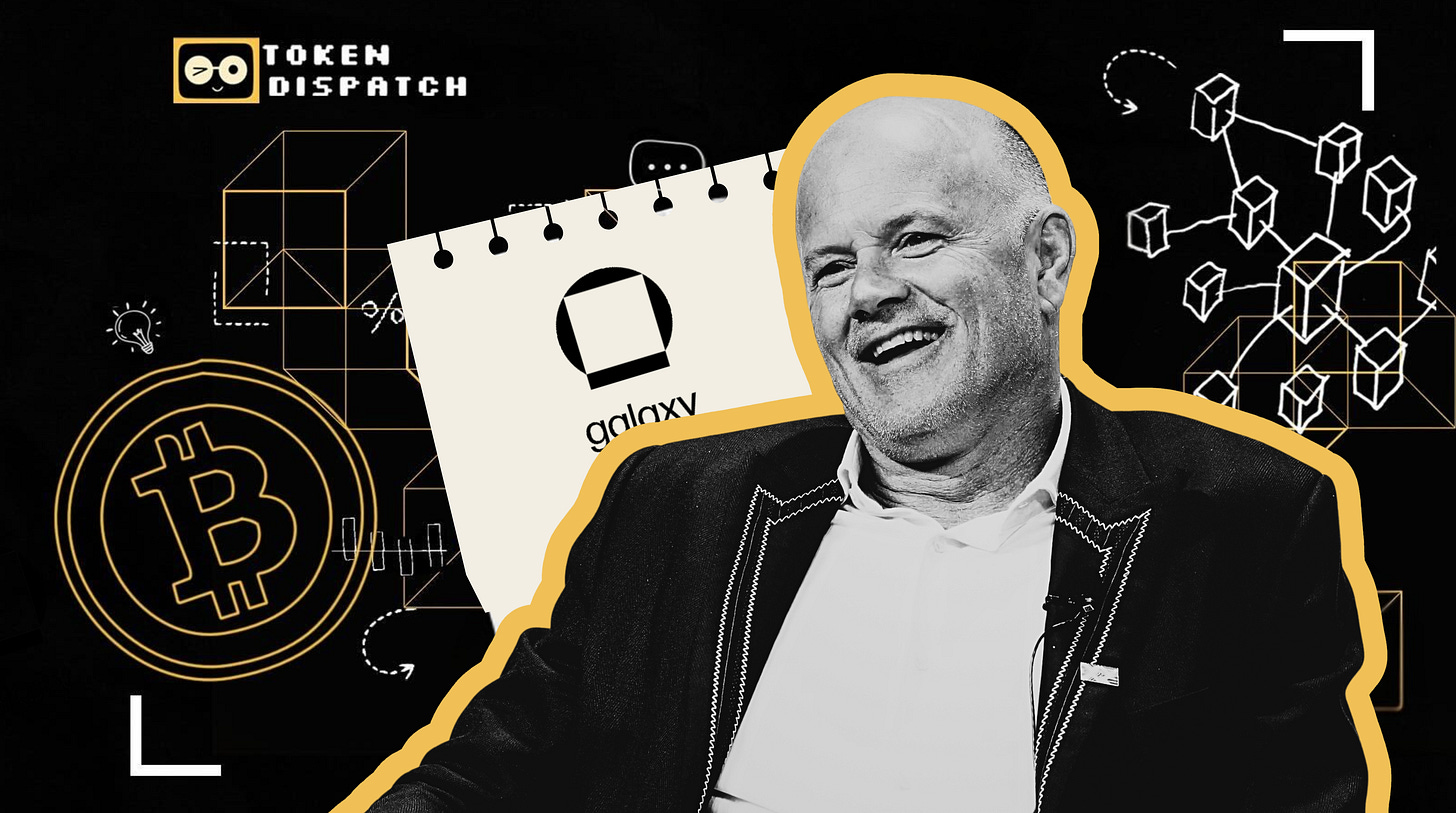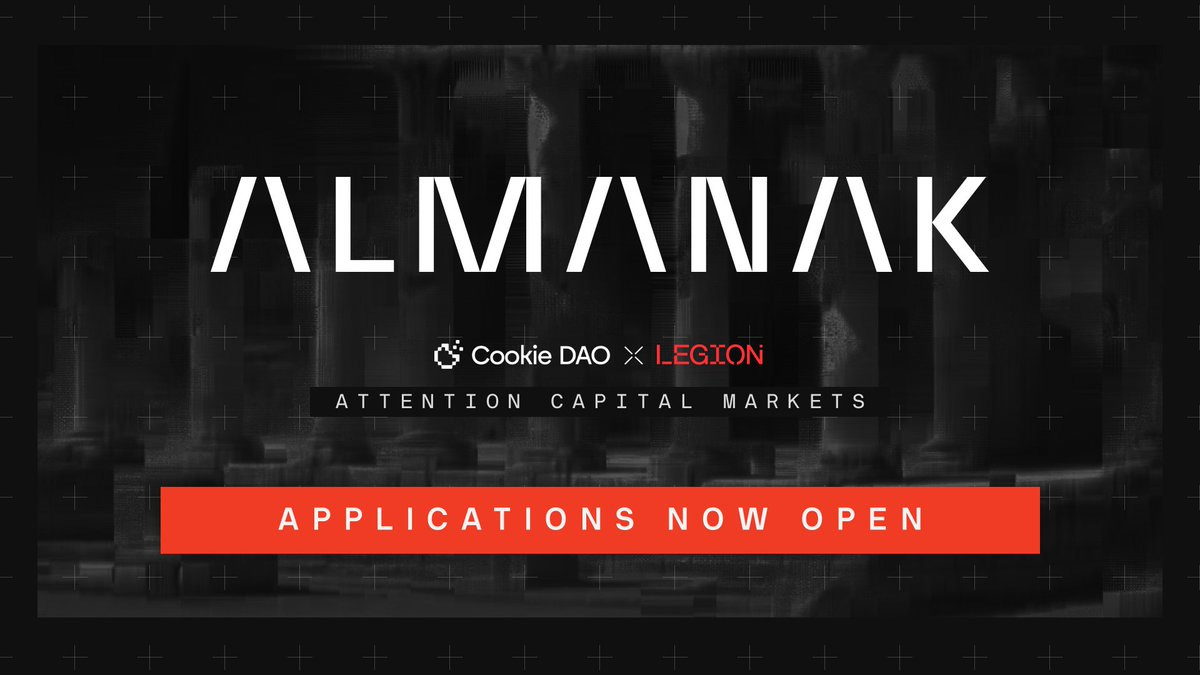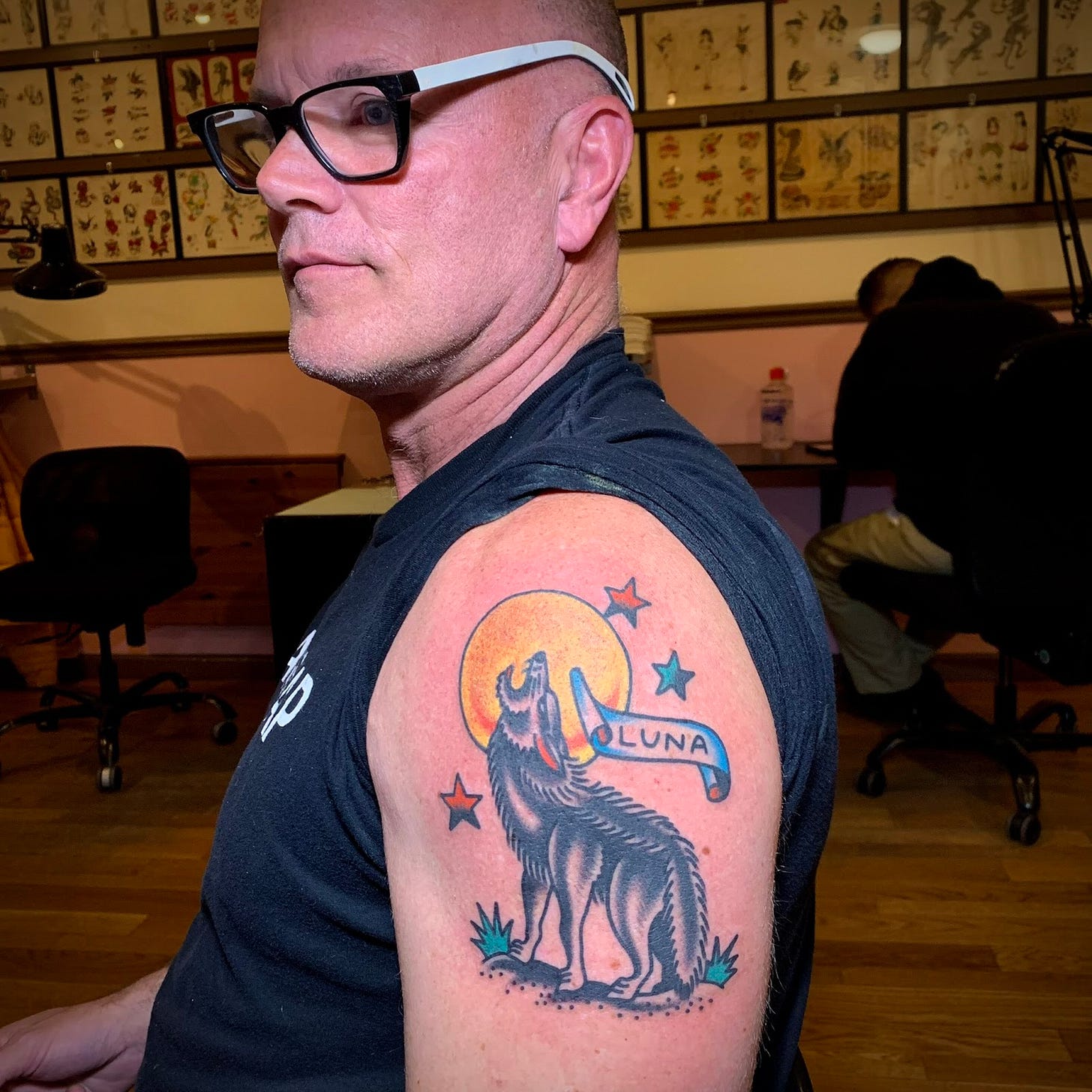Michael Novogratz: The Wall Street Refugee 👨🦲
The macro trader who wrote a letter about his biggest mistake and turned it into his greatest lesson.
May 18, 2022. Michael Novogratz stared at his arm.
The Terra Luna tattoo looked back at him. A crescent moon that had cost him millions of dollars and nearly destroyed his reputation. Luna's price had collapsed from $80 to zero in 72 hours, wiping out $60 billion in what crypto people now call the "death spiral."
Most CEOs would have hired crisis management firms, blamed market manipulation, or simply stayed quiet until the news cycle moved on.
Novogratz? He sat down and wrote a letter.
"My tattoo will be a constant reminder that venture investing requires humility," he typed, explaining exactly what went wrong and what Galaxy Digital had learned from backing one of crypto's biggest disasters. The letter went public that afternoon.
When a bet goes wrong, reach for the standard playbook. Issue a carefully worded statement, shift attention to “market conditions,” and wait for the headlines to fade. Novogratz didn’t. He wrote a letter.
Instead of deflecting, he described exactly what had happened with Terra, what Galaxy had misjudged, and what he himself had learned. Confession is not unheard of in finance, but he turned it into a kind of industry-wide case study. Where others might have minimised the damage, he put his misstep under a spotlight and invited everyone else to take notes.
Novogratz had never been typical of Wall Street. The former Goldman Sachs partner and Princeton wrestler had built his career by treating both victories and defeats as material for the next big play.
The Terra Luna collapse would have ended most crypto careers. For Novogratz, it became another chapter in a story that started on wrestling mats, moved through currency trading floors, and now spans from Bitcoin advocacy to AI data centres worth billions.
DeFi Won’t Stay Manual for Long
Spreadsheets, manual looping, and Twitter signals are already falling behind.
The next edge is vibecoding DeFi strategies with Almanak's AI agents that can research, optimise, and execute on-chain strategies better and faster than any human desk.
It’s the shift from human-driven DeFi to machine-accelerated DeFi. Smarter trades. Lower risk. Higher consistency.
The market’s vote of confidence? Almanak’s Round on Legion got oversubscribed in 45’ and is currently still open.
Join the wave that’s redefining how DeFi gets done.
⚡ See why
November 26, 1964. Alexandria, Virginia.
Michael Novogratz was born as the third of seven children in a family that treated competition the way other households treated vegetables: mandatory, good for you and non-negotiable. His father had played football at West Point, so the baseline expectation was excellence, or at least a convincing performance of it.
At Fort Hunt High School, Novogratz discovered wrestling. Not just as a sport, but as a laboratory for reading opponents, managing risk under pressure, and understanding that preparation mattered more than natural talent.
He reached the state runner-up level before Princeton University recruited him. Division I wrestling at an Ivy League school meant cutting weight, tactical preparation, and performing when everything depended on individual execution. Novogratz captained Princeton's team and earned first-team All-Ivy League honours in 1986 and 1987.
April 1, 1989. Goldman Sachs.
Novogratz joined as a short-term bond salesman, one of hundreds of young recruits who showed up every year hoping to make partner. Most would flame out within five years. A few would get rich. Fewer still would understand the bigger game being played.
What set Novogratz apart was his timing and his readiness to take assignments others might have dodged. In 1992, Goldman sent him to Asia, where he would spend the next seven years trading through currency swings, interest rate shocks, and ultimately the Asian Financial Crisis of 1997. The experience gave him a front-row seat to one of the most turbulent chapters in modern markets and turned him into one of Goldman’s go-to specialists in global macro.
The experience of working in currency and interest rate markets during this period positioned him as one of Goldman's global macro specialists by the time he was elected partner in 1998.
The partnership came with equity, profit sharing, and access to the firm's internal investment opportunities. More importantly, it positioned him as one of Goldman's global macro specialists just as the firm was preparing to dominate the next decade of financial markets.
But Novogratz wasn't done climbing.
The Fortress Empire and Its Fall
2022. Fortress Investment Group.
Novogratz left Goldman to join what would become one of the defining alternative investment platforms of the 2000s. Fortress was expanding from private equity and credit into global macro, and they needed someone who understood how to make money from currency chaos, interest rate volatility, and commodity supercycles.
At that time, central banks were actively managing exchange rates, emerging markets were becoming accessible to international capital, and technology was creating new ways to trade everything from Brazilian real to copper futures. Macro investing was entering a golden age.
Novogratz ran the Fortress Macro Fund, which grew to manage $2.3 billion in assets. The fund operated successfully for over a decade before market conditions shifted in the post-2008 environment.
February 2007. Fortress went public.
The firm became the first large US alternative asset manager to IPO, briefly creating multiple billionaires on paper. Novogratz and his partners were featured on magazine covers and keynoted major conferences. For 18 months, they were financial industry celebrities riding the peak of the credit bubble.
Then 2008 arrived like a meteor strike.
The financial crisis fundamentally changed the environment for macro trading. Central banks began coordinating policies more closely, currency relationships shifted in unexpected ways, and many of the market inefficiencies that macro funds had exploited simply disappeared.
By 2013, the macro fund was struggling. The post-crisis world had proven challenging for many macro strategies. Coordinated central bank policies reduced the kind of volatility that macro traders needed to generate returns. What had worked brilliantly for a decade suddenly didn't work at all.
October 2015. The announcement came.
Fortress would liquidate the $2.3 billion macro business. Novogratz would step away as capital was returned to investors. Thirteen years of building one of the industry's premier macro operations ended with a press release and a series of final investor calls.
The closure could have been career-ending. Instead, Novogratz treated it as education. The macro fund's success had been built on identifying policy-driven market dislocations and exploiting them before others caught on. Its failure reflected changing market conditions, not poor management.
He would need that lesson sooner than he knew.
The Digital Gold Rush
2013. Fortress offices, New York.
Pete Briger, co-chief executive of Fortress Investment Group and an old Goldman colleague called Novogratz with a question that would change his life: "Dude, what do you know about Bitcoin?"
The answer was nothing.
Novogratz had never heard of digital currency, blockchain technology, or cryptocurrency. Like most traditional finance professionals, he assumed it was either a scam or a toy for computer programmers.
But Briger had been talking to friends in California who were convinced Bitcoin represented something bigger. They partnered with Dan Morehead, a former Tiger Management executive who had launched Pantera Capital, one of the first dedicated crypto investment firms.
Together they made their initial Bitcoin purchases when the price hovered around $200. Initially, it was just another macro bet. If this digital currency thing worked, early adopters would do well. If it failed, they could afford the loss.
Here was a non-sovereign store of value emerging just as central banks were pursuing unprecedented monetary expansion. It offered exposure to technological disruption while providing a hedge against currency debasement.
By 2016, Novogratz had become one of crypto's most visible advocates, appearing on financial television to explain digital assets to institutional audiences who might have dismissed other crypto enthusiasts. His Goldman Sachs credentials and macro investing background gave him credibility with traditional investors who were just beginning to consider cryptocurrency as a legitimate asset class.
But advocacy wasn't enough. He wanted to build something.
January 9, 2018. Galaxy Digital announcement.
Novogratz revealed plans for a full-service digital assets platform combining trading, asset management, investment banking, and principal investing.
The vision was to become the Goldman Sachs of crypto by offering institutions the same range of services they received from traditional investment banks, but focused on digital asset markets.
The launch was structured through a business combination with Canadian companies, allowing Galaxy to list publicly while US regulatory frameworks for crypto businesses remained unclear. On July 31, 2018, Galaxy completed its reverse takeover and began trading on the TSX Venture Exchange under the symbol GLXY.
Galaxy's business model differed from pure-play crypto companies. Instead of simply buying and holding digital assets, the firm actively traded its treasury positions, using gains from successful trades to fund operations and expansion. This approach provided more flexibility than a pure hold strategy but meant financial results depended partly on market timing and trading performance.
The strategy worked brilliantly during crypto bull markets. Galaxy's treasury operations generated hundreds of millions in gains as Bitcoin and Ethereum appreciated. The firm's venture investments in crypto infrastructure and applications created additional value as the ecosystem matured.
But 2022 brought new challenges.
May 2022. The Terra Luna ecosystem collapsed in a matter of days, wiping out $60 billion in value and destroying one of crypto's most hyped projects. When Luna's algorithmic stablecoin mechanism failed catastrophically, Galaxy faced both financial losses and reputational damage.
Galaxy had invested early, buying 18.5 million LUNA tokens at $0.22 apiece in 2020, then steadily selling into the rally as the price climbed. By the time LUNA peaked at $119 in April 2022, Galaxy had already pocketed hundreds of millions of dollars in profits and reduced its holdings to almost nothing. When the algorithmic stablecoin mechanism finally failed, Galaxy’s direct financial exposure was negligible: only about 2,000 LUNA tokens remained, worth less than ten dollars after the collapse.
Instead of hiding from the mistake, Novogratz published a detailed explanation of what went wrong and what lessons the episode offered. The CEO letter addressed risk management, due diligence processes and the importance of separating sustainable business models from experimental protocols in crypto.
He acknowledged that his public support for Luna, including getting a Luna tattoo, had been premature given the project's experimental nature.
The letter became one of the most widely-cited post-mortems of the Luna collapse, because it provided an honest assessment of how even sophisticated investors could be wrong about emerging technologies.
The AI Infrastructure Bet
2024. Galaxy offices, New York.
While crypto markets recovered from the Terra Luna and FTX collapses, Novogratz was already planning Galaxy's next evolution. The firm announced a significant expansion into artificial intelligence infrastructure, leveraging its experience with energy-intensive computing operations to enter the AI data centre market.
Galaxy had learned how to operate large-scale computing infrastructure through its crypto mining operations. The same skills that optimised Bitcoin mining could be applied to AI computing, but with potentially higher margins and more predictable revenue streams.
Read: From Mining Coins to Mining Intelligence
In August 2024, Galaxy secured a $1.4 billion project financing facility for its Helios data centre campus in Texas. The facility would provide 800 megawatts of computing capacity for CoreWeave, a GPU cloud provider, under a 15-year contract that Galaxy expected to generate over $1 billion in annual revenue.
The Helios project aimed to develop up to 3.5 gigawatts of power capacity at full buildout, positioning Galaxy as a major player in the supply-constrained AI infrastructure market. The business model promised higher margins and more predictable revenue than crypto trading operations.
The firm maintained its established crypto businesses while expanding into adjacent technology sectors that leveraged its existing expertise.
Crypto has always been part finance, part theatre. Few people embody that as much as Novogratz.
He is a trader who tells stories, and a storyteller who trades. The Luna tattoo, the candid letters, the cable-news appearances. They are not just confessions or branding exercises, but proof that markets move on narrative as much as numbers.
The businesses he’s built, whether macro funds at Fortress or Galaxy’s hybrid of trading, venture, and now AI data centres have all been attempts to give shape to forces larger than any individual. The volatility of currencies, the decentralisation of finance, the computational hunger of machine learning.
If he sometimes looks reckless, it’s because he is playing in arenas where certainty doesn’t exist. And if he sometimes looks prescient, it’s because those same arenas reward the few who can move fast, absorb losses, and still raise the next bet.
For Novogratz, the question has never been whether crypto or AI will have busts. They will. The question is who will have built platforms resilient enough to survive them. And for all the chaos and spectacle that surrounds him, that may end up being his most important contribution: The scaffolding that allows the next generation of risk-takers to stand a little taller.
That’s it for now. Will come to you with another profile next week.
Until then …stay curious.
Token Dispatch is a daily crypto newsletter handpicked and crafted with love by human bots. If you want to reach out to 200,000+ subscriber community of the Token Dispatch, you can explore the partnership opportunities with us 🙌
📩 Fill out this form to submit your details and book a meeting with us directly.
Disclaimer: This newsletter contains analysis and opinions of the author. Content is for informational purposes only, not financial advice. Trading crypto involves substantial risk - your capital is at risk. Do your own research.







